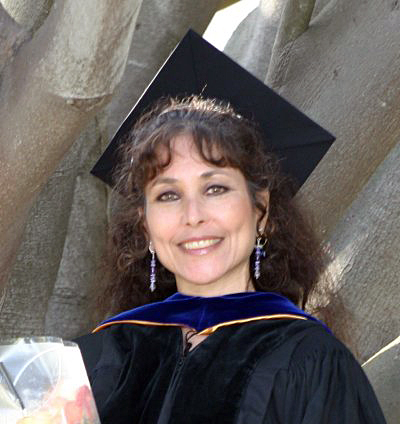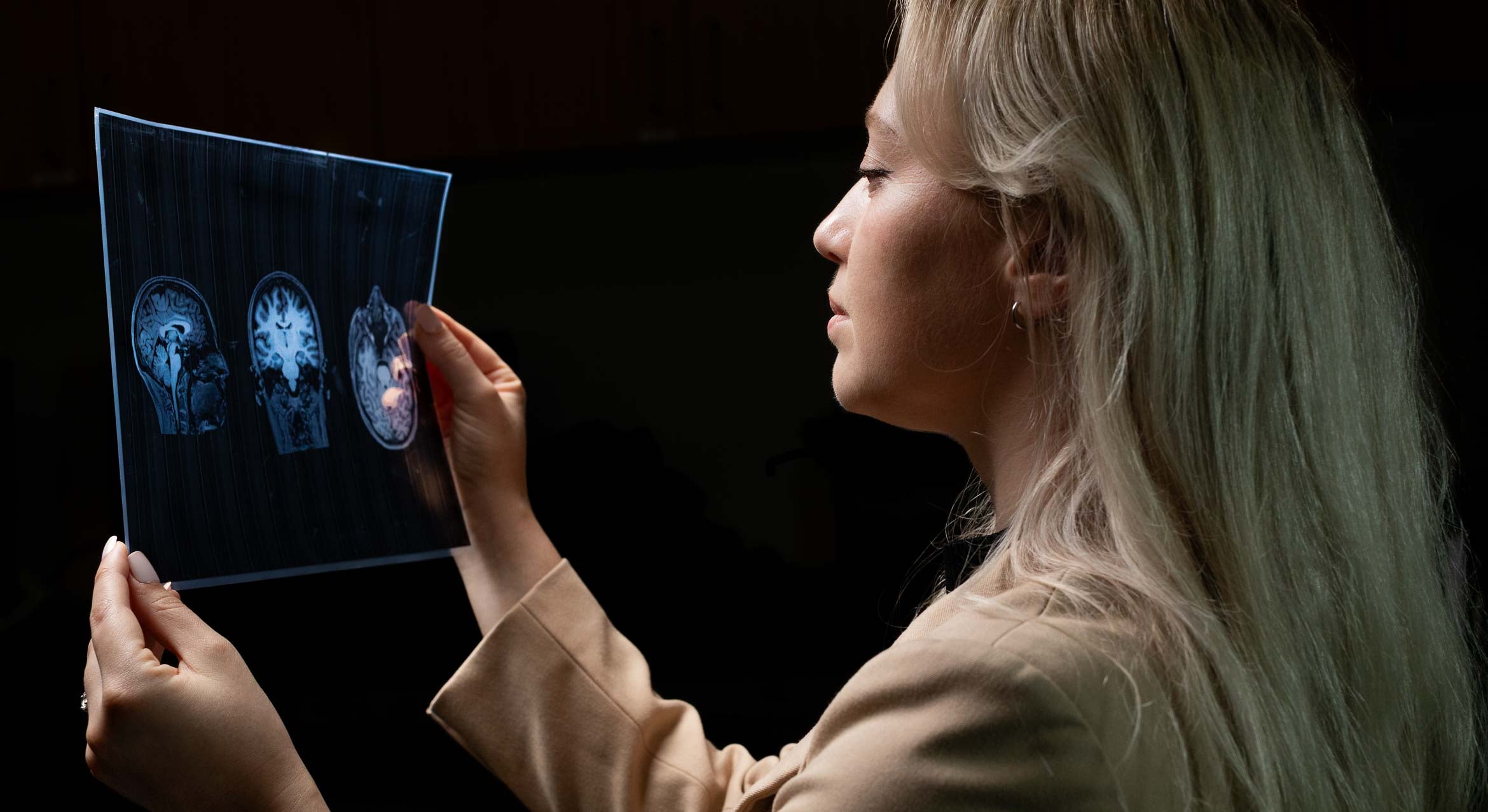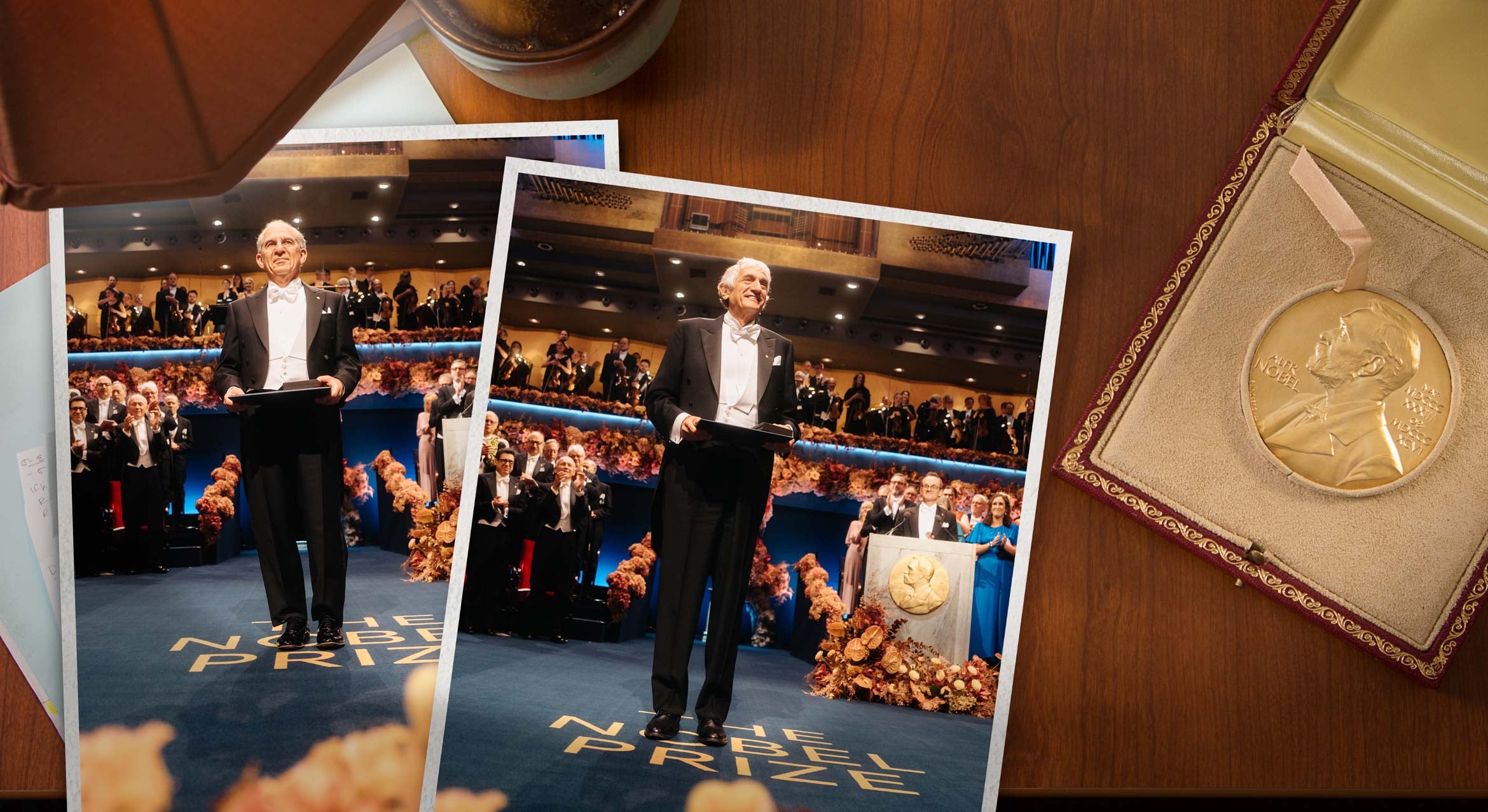
Based on research she conducted for her doctoral dissertation several years ago, Jatila van der Veen, a lecturer in the College of Creative Studies at UC Santa Barbara and a research associate in UCSB's physics department, created a new approach to introductory physics, which she calls "Noether before Newton." Noether refers to the early 20th-century German mathematician Emmy Noether, who was known for her groundbreaking contributions to abstract algebra and theoretical physics.
Using arts-based teaching strategies, van der Veen has fashioned her course into a portal through which students not otherwise inclined might take the leap into the sciences –– particularly physics and mathematics. Her research appears in the current issue of the American Educational Research Journal, in a paper titled "Draw Your Physics Homework? Art as a Path to Understanding in Physics Teaching."
Van der Veen, who is also the education and public outreach coordinator for the NASA collaborators in the Planck Mission, an international mission lead by the European Space Agency with significant contributions from NASA, said her initial research came out of her desire to make physics more accessible to female students. "I started out in gender studies, and then saw that the problem of gender in physics is just too broad and too ill-defined," she explained. "So I was looking for something else."
A dancer as well as a scientist, van der Veen was struck by the fact that, while seemingly divergent, each of those elements had been present in her life for as long as she could remember. In addition, many of her fellow recreational dancers also have jobs in science, technology, engineering, and mathematics fields. "I thought, if people in the sciences enjoy the arts, is it possible to go the other way? Can arts-based strategies help bring people into the sciences?"
While traditional introductory physics courses focus on 17th-century Newtonian mechanics, van der Veen takes a contemporary approach. "I start with symmetry and contemporary physics," she said. "Symmetry is the underlying mathematical principle of all physics, so this allows for several different branches of inclusion, of accessibility."
Much of van der Veen's course is based on the principles of "aesthetic education," an approach to teaching formulated by the educational philosopher Maxine Greene. Greene founded the Lincoln Center Institute, a joint effort of Teachers College, Columbia University, and Lincoln Center. Van der Veen is quick to point out, however, that concepts of physics are at the core of her course. "It's not simply looking at art that's involved in physics, or looking at beautiful pictures of galaxies, or making fractal art," she said. "It's using the learning modes that are available in the arts and applying them to math and physics."
Taking a visual approach to the study of physics is not all that far-fetched. "If you read some of Albert Einstein's writings, you'll see they're very visual," van der Veen said. "And in some of his writings, he talks about how visualization played an important part in the development of his theories."
Van der Veen has taught her introductory physics course for five years, and over that time has collected data from one particular homework assignment she gives her students: She asks them to read an article by Einstein on the nature of science, and then draw their understanding of it. "I found over the years that no one ever produced the same drawing from the same article," she said. "I also found that some students think very concretely in words, some think concretely in symbols, some think allegorically, and some think metaphorically."
Adopting arts-based teaching strategies does not make van der Veen's course any less rigorous than traditional introductory courses in terms of the abstract concepts students are required to master. It creates a different, more inclusive way of achieving the same end.
"If you start with contemporary physics, instead of 17th-century physics, you start with what's relevant today," van der Veen said. "You give students an opportunity to dialogue with what's current today. That makes physics real, and makes people want to study it."
Related Links



